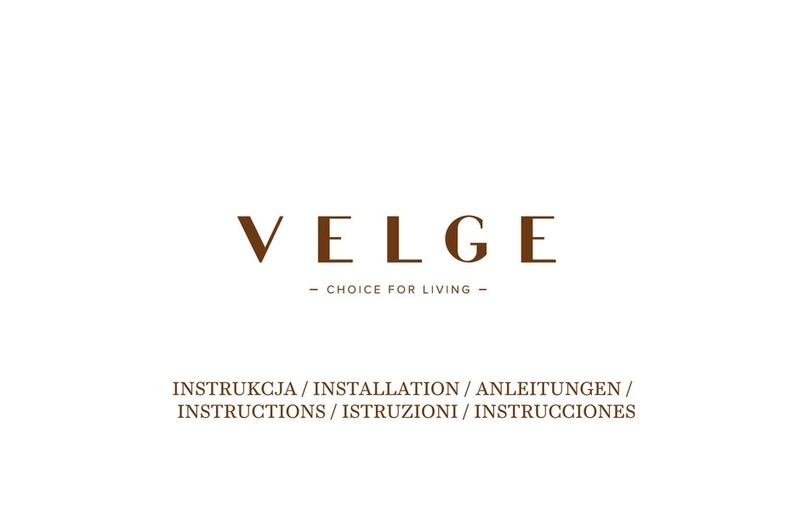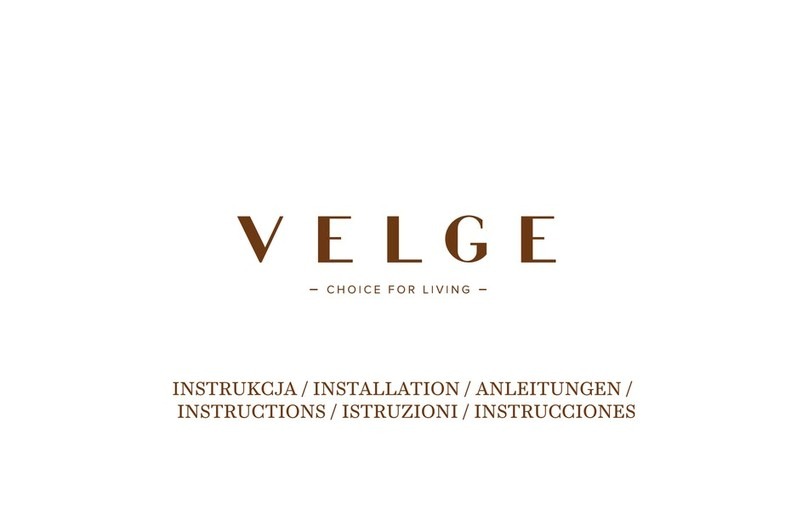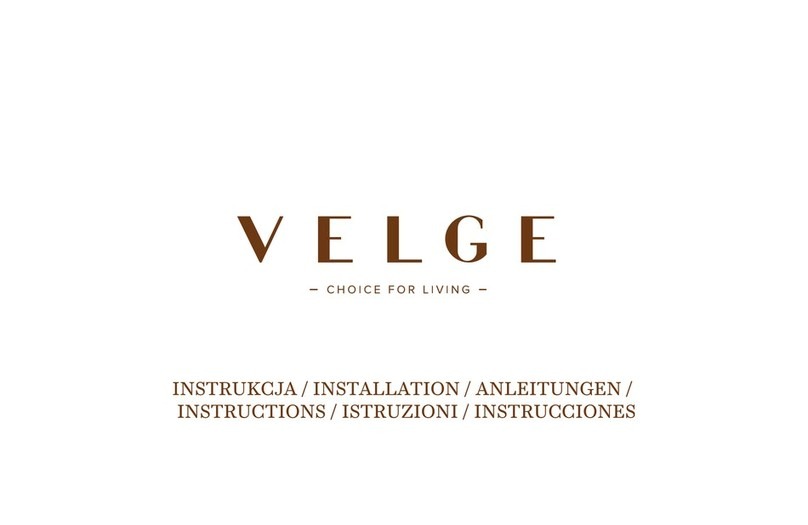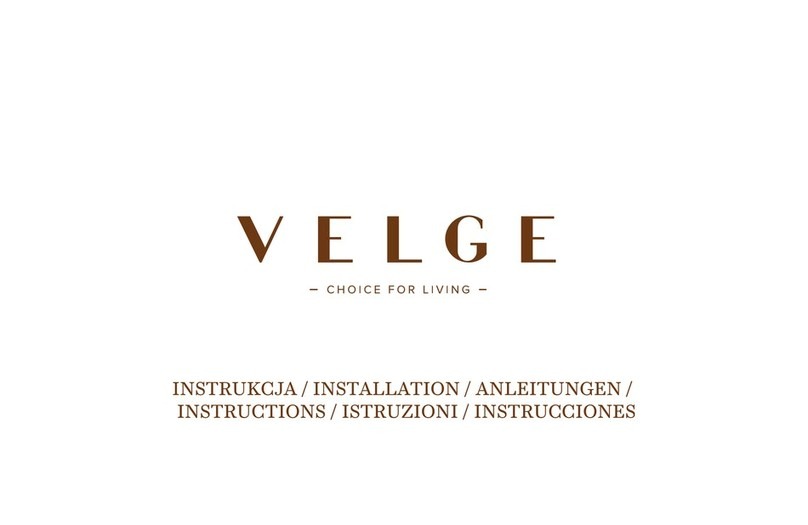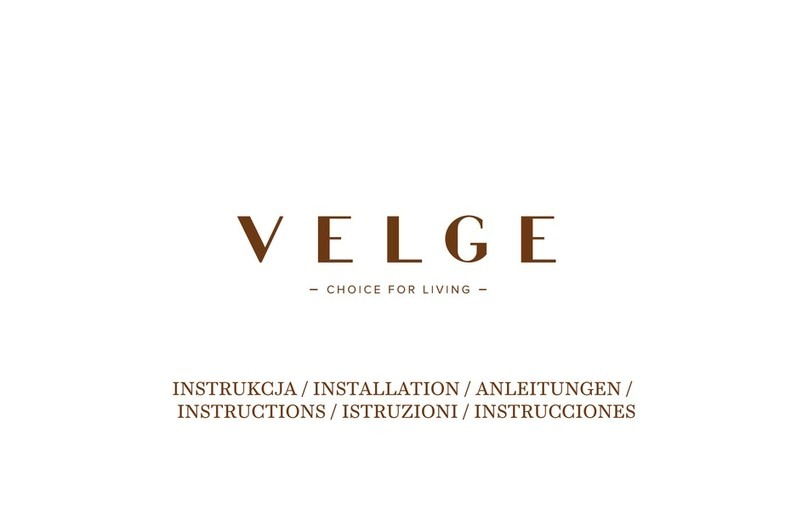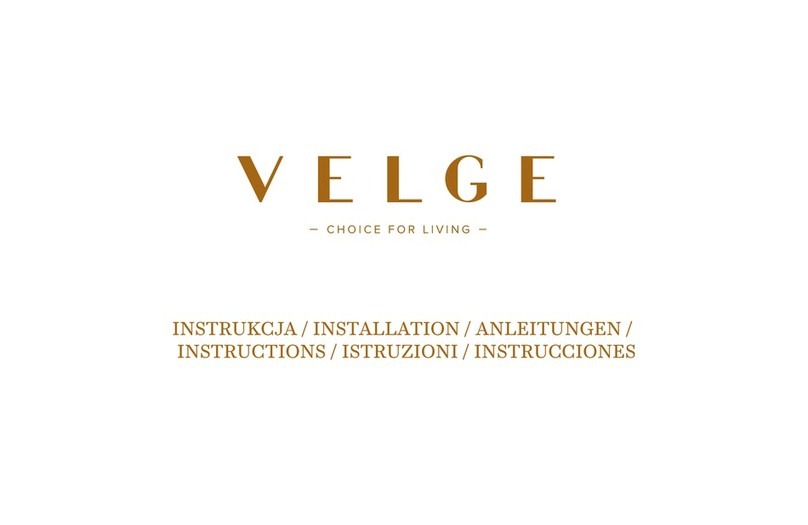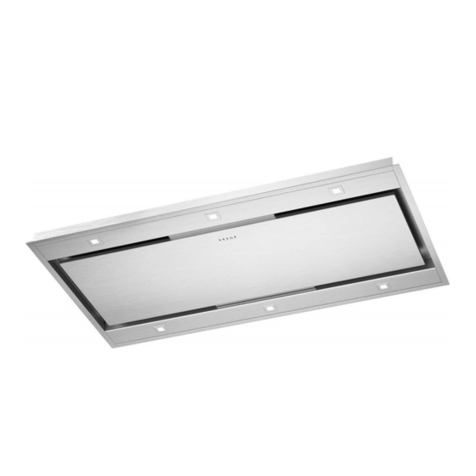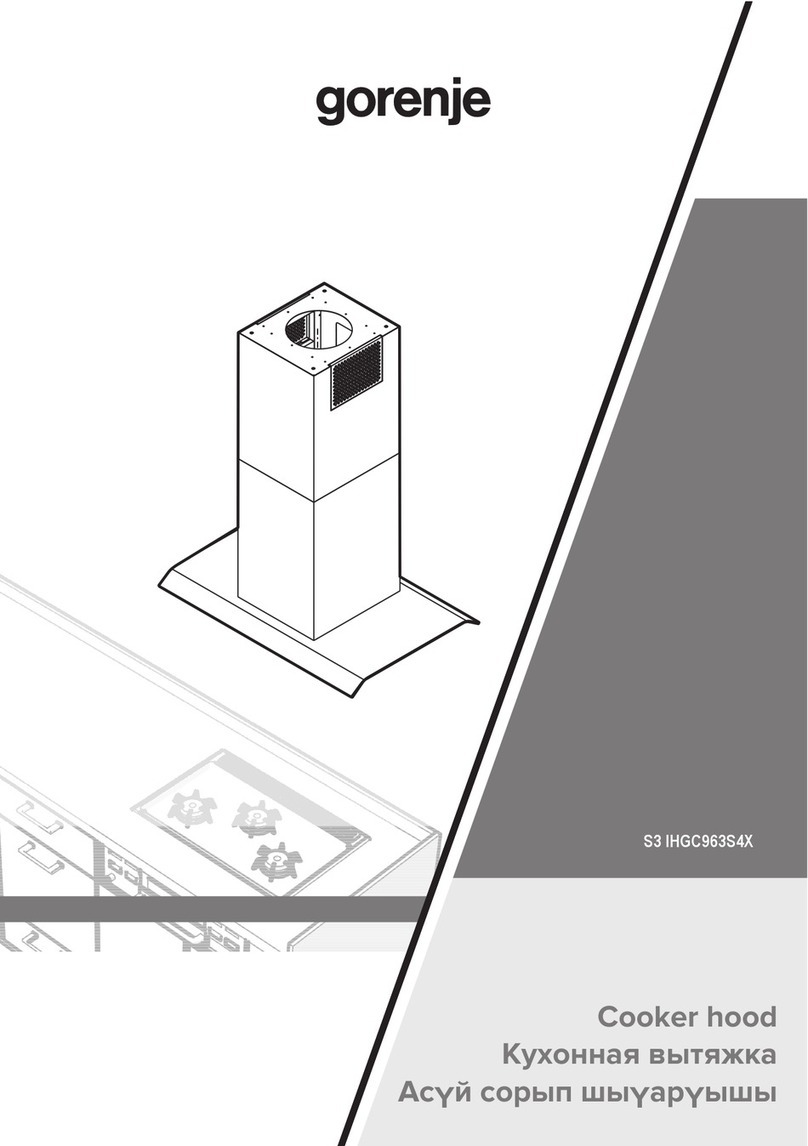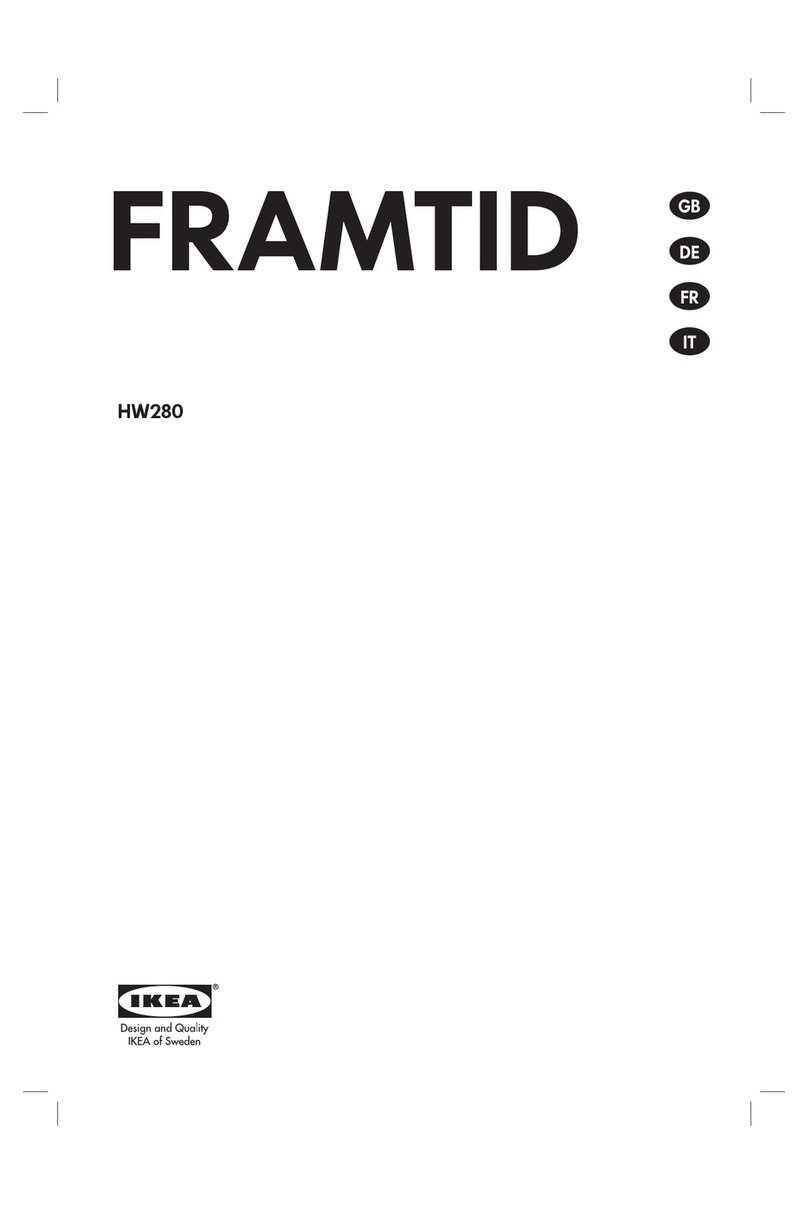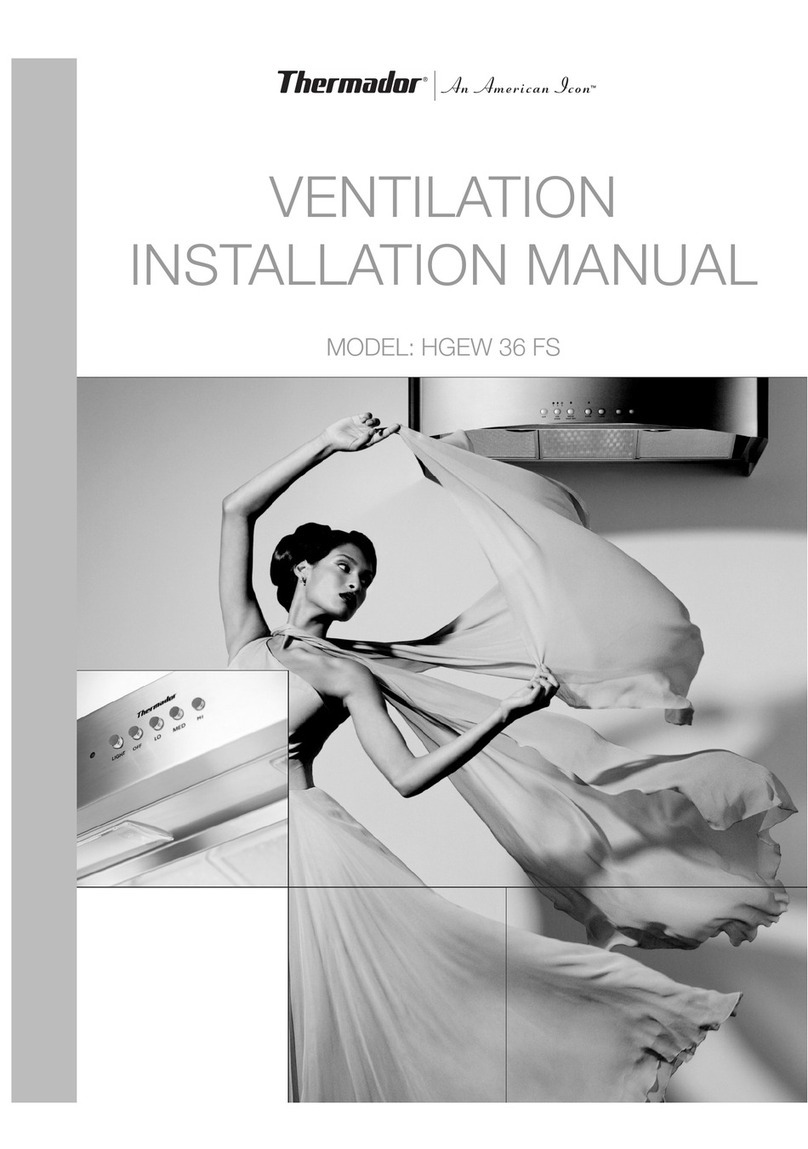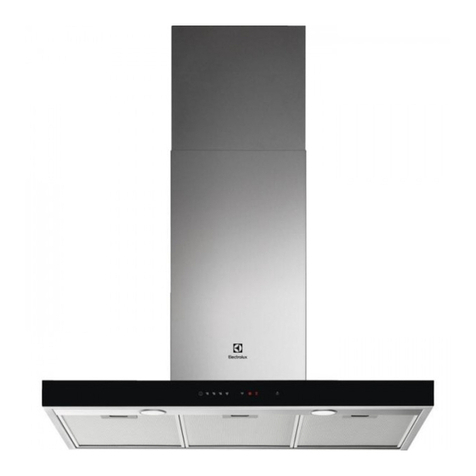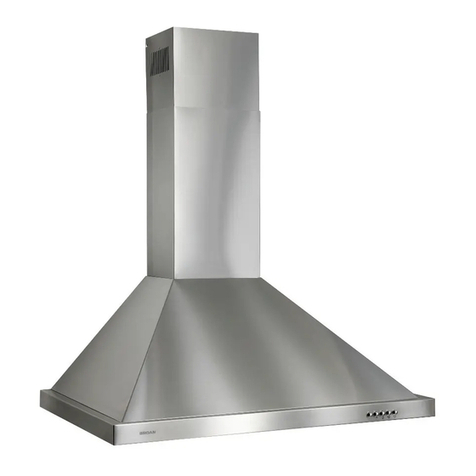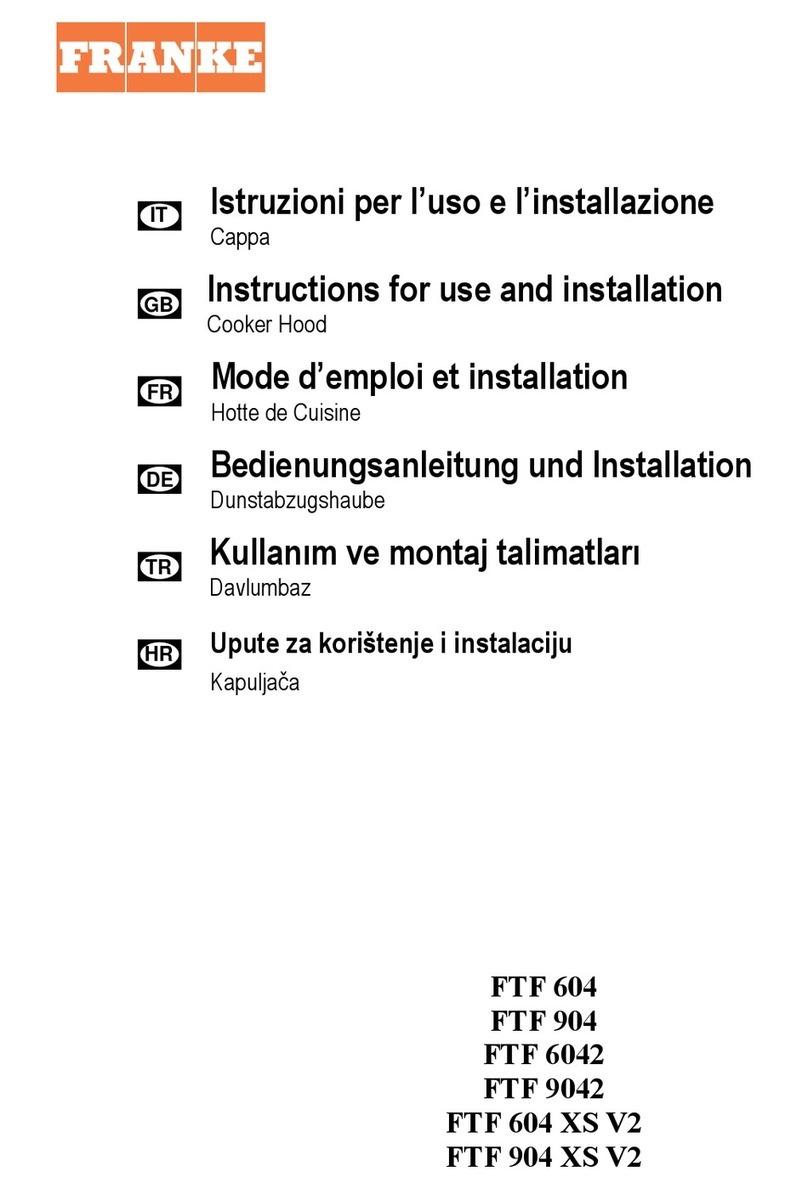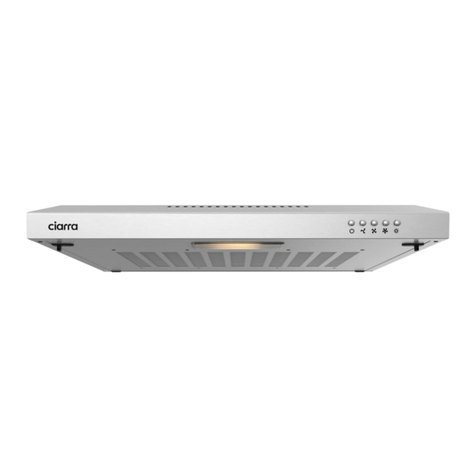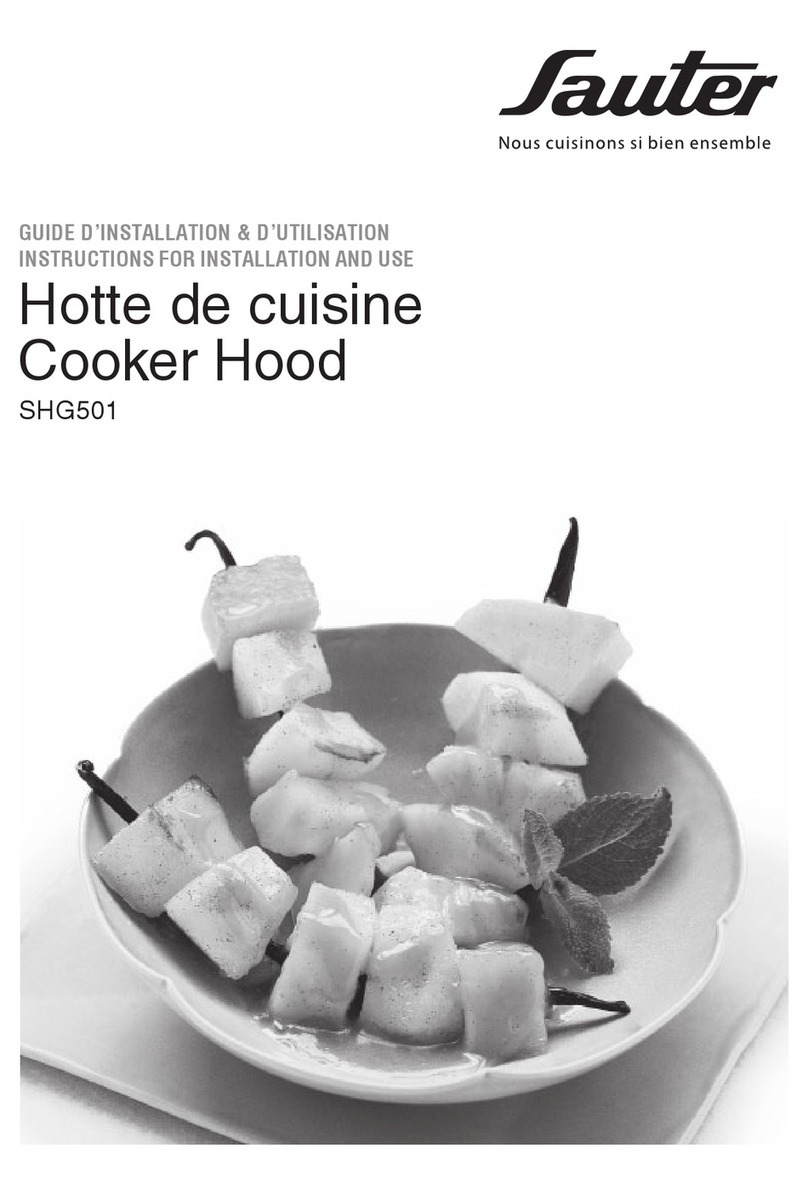
cząstek tłuszczu.
Opłukać okap wilgotną szmatką, starannie usuwając wszystek detergent
zgodnie z kierunkiem polerowania powierzchni ze stali. Suszenie okapu
jest bardzo ważne, szczególnie w miejscach, gdzie woda jest szczególnie
twarda i pozostawia osad wapienny.
W celu przeprowadzenia konserwacji diod należy skontaktować się
z autoryzowanym centrum obsługi technicznej.
OSTRZEŻENIA
Niniejsza instrukcja stanowi integralną część samego urządzenia, wobec
powyższego należy ją starannie przechowywać i ZAWSZE powinna
ona towarzyszyć urządzeniu, nawet w przypadku przeniesienia jego
własności na innego właściciela lub posiadania na innego użytkownika lub
w przypadku, gdy okap jest przenoszony do innego zakładu.
Jakiejkolwiek regulacji instalacji elektrycznej, która może być
konieczna w celu zainstalowania okapu, mogą dokonywać wyłącznie
osoby kompetentne. Wszelkie naprawy wykonywane przez osoby
niekompetentne mogą powodować powstawanie uszkodzeń. W celu
dokonania jakiejkolwiek naprawy lub innych czynności technicznych
należy skontaktować się z Centrum Obsługi Technicznej, które jest
uprawniona do wymiany części zamiennych.
Zawsze należy upewnić się, że wszystkie części elektryczne (lampy,
urządzenie do odprowadzania oparów) są odłączone, kiedy urządzenie
nie jest używane.
W przypadku wyładowań atmosferycznych umieścić przełącznik systemu
na pozycji „Wyłączony”.
Korzystanie z okapu nie może różnić się od korzystania z pochłaniaczy
oparów kuchennych w kuchenkach produkcji krajowej. Producent nie
ponosi żadnej odpowiedzialności za szkody spowodowane przez ludzi,
zwierzęta lub przedmioty, lub przez błędy, do których doszło w trakcie
montażu i obsługi, lub przez użytkowanie niezgodne z prawem.
Należy upewnić się, że wskaźniki znamionowego napięcia (V)
i częstotliwości (Hz) podane na tabliczce znamionowej znajdującej się
KONSERWACJA
Zawsze przed przystąpieniem do czynności konserwacji lub
czyszczenia należy odłączać okap od zasilania.
Szczególną uwagę należy zwrócić na metalowe ltry przeciwtłuszczowe,
które są przeznaczone do wychwytywania cząsteczek tłuszczu zawartych
w oparach. Metalowe ltry przeciwtłuszczowe należy myć co najmniej raz
w miesiącu przy użyciu detergentu i w gorącej wodzie (lub w zmywarce).
U WA GA : tłuszcz, który gromadzi się w ltrach może łatwo zapalić się,
dlatego niezwykle ważne jest, aby metalowe ltry czyścić regularnie
i zgodnie z instrukcją.
Filtry węgla aktywnego przeznaczone są do usuwania nieprzyjemnych
zapachów z kuchennych oparów. Oczyszczone powietrze jest
następnie uwalniane do środowiska. Filtrów węglowych nie należy
myć, natomiast należy je wymienić 2 do 3 razy w roku w zależności
od tego, z jaką częstotliwością korzysta się z okapu. Nowe ltry należy
nabyć bezpośrednio u producenta. Wykonywać czynności w odwrotnej
kolejności, aby zainstalować nowe ltry przeciwtłuszczowe. Następnie
należy zdemontować ltry z węgla aktywnego umieszczone na dwóch
końcach pochłaniacza. Obracać ltr, do chwili jego odłączenia od
pochłaniacza (rys. 4 - G).
Wykonywać czynności w odwrotnej kolejności, aby zainstalować nowe
ltry węglowe.
Okap należy wyczyścić natychmiast po jego zamontowaniu i zdjęciu
folii ochronnej w celu usunięcia resztek kleju lub wszelkich innych
zanieczyszczeń.
Zarówno wewnętrzną, jak i zewnętrzną część okapu należy czyścić
często (co najmniej raz w miesiącu). Nie należy pozwolić na to, aby
zanieczyszczenia gromadziły się na wewnętrznej i zewnętrznej
powierzchni okapu.
Do czyszczenia obudowy okapu nie należy używać kwasu lub produktów
podstawowych ani też gąbek ściernych.
Czyścić okap gąbką zwilżoną ciepłą wodą i małą ilością neutralnego
detergentu (np. detergentu do zmywarek) w celu usunięcia ewentualnych
